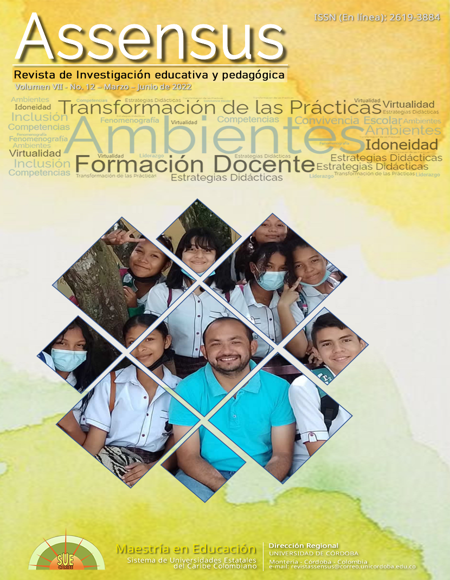Folkloric Popular Dance, a satisfactory synergy of human needs
La danza popular folclórica, un satisfactor sinérgico de las necesidades humanas

This work is licensed under a Creative Commons Attribution-ShareAlike 4.0 International License.
The Assensus journal has a Creative Commons license. The citation, use and partial or total reproduction of the contents is authorized by citing sources. For more information, see https://creativecommons.org/licenses/by-sa/4.0/deed.en
Show authors biography
Folkloric dance and the interaction of its elements significantly influence the physical, mental and communicational control of the dancers; elevating knowledge and feelings to spaces that express from their intrinsic area to poems of life and social transformation, also denoting in their artistic creations and shows, sensations, emotions that awaken human sensitivity. The objective of this research is to describe from the discursive regularities of the students of the folkloric dance group of the University of Cordoba, Monteria, the human needs that are satisfied with the practice of dance, attending the matrix of needs and satisfiers of development on a human scale. The type of research was Reflection Action Research (RAR), and it was located in the context of the qualitative research approach. The results were structured obeying each of the three specific objectives and it was concluded that the contribution of dance is significant in the physical, affective, mental, intellectual and aesthetic dimensions of the dancer, so it is necessary to strengthen cultural events in the educational field, where dance finds in the educational processes spaces where it manages to transcend in the social imaginary as an opportunity of life.
Article visits 582 | PDF visits
Downloads
- Escudero, M. C. (2013) Una propuesta para pensar a la danza como un contenido de la Educación Corporal [en línea]. 10mo Congreso Argentino de Educación Física y Ciencias, 9 al 13 de septiembre de 2013, La Plata. En Memoria Académica. Disponible en: http://www.memoria.fahce.unlp.edu.ar/trab_eventos/ev.3225/ev.3225.pdf
- Ferreira, M. (2009). Un enfoque pedagógico de la danza. Educación Física – Desarrollo humano y social. Chile. (268), 9-21
- Galeano, M. (2004). Diseño de proyectos en la investigación cualitativa. Fondo editorial Universitario EAFIT.
- García. Pérez. José. R.Ñ., Mena. Marcos. Juan. J., Sánchez. M. (2009). Investigación-acción para el cambio educativo. Buckingham: Prensa universitaria abierta. Revista de Educación Docente, N° 51 (2), pp 87-100.
- Giddens, A. (2007). Sociología. Una visión de las necesidades. Madrid, Alianza Editorial. 5ª edición.
- Lévi-Strauss. Claude. (1993). Conferencias sobre la diversidad cultural. (L'anthropologie face aux problèmes du monde moderne)
- Malo. González. C. (2010). Arte y Cultura Popular. Centro Interamericano de Artesanías y Artes Populares CIDAP. Segunda edición. ISBN: 9978-85-023
- Maslow, A. (1954). Motivación y personalidad. Ediciones Sagitario. Barcelona. España
- Max Neef, M., Elizalde, A & Hopenhayn. (1994). Desarrollo a Escala Humana. Montevideo, Uruguay: Editorial Nordan-Comunidad.



